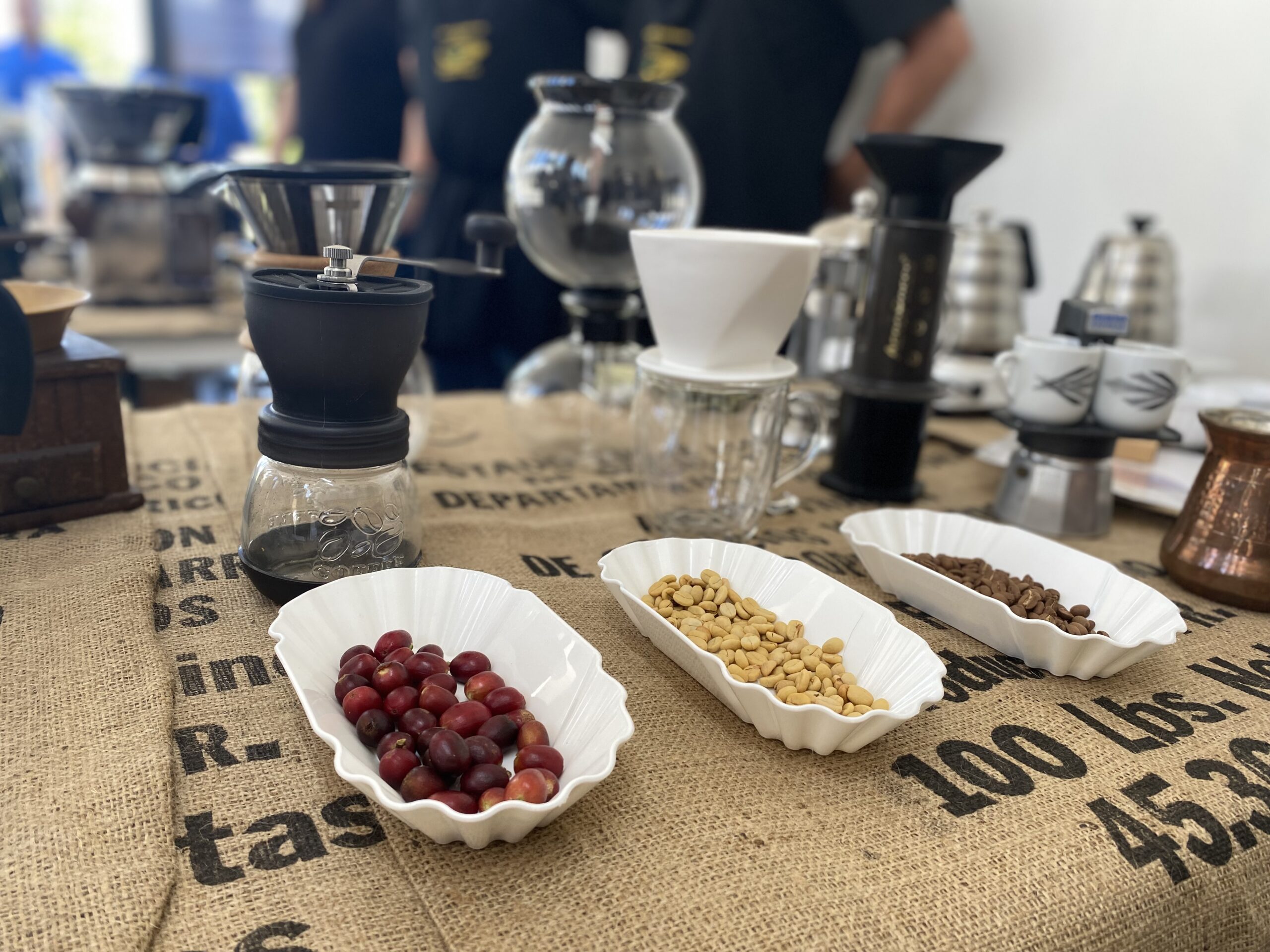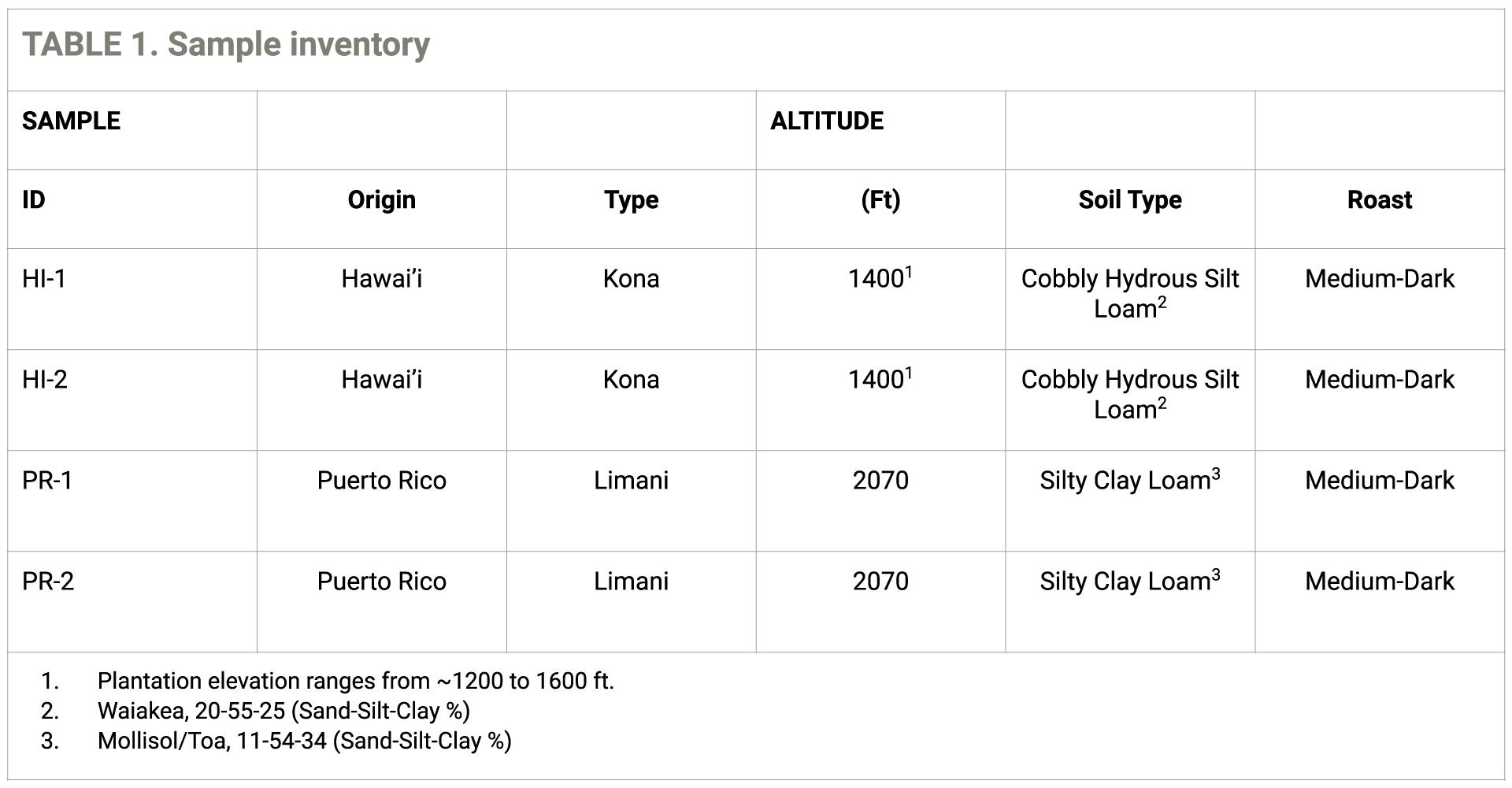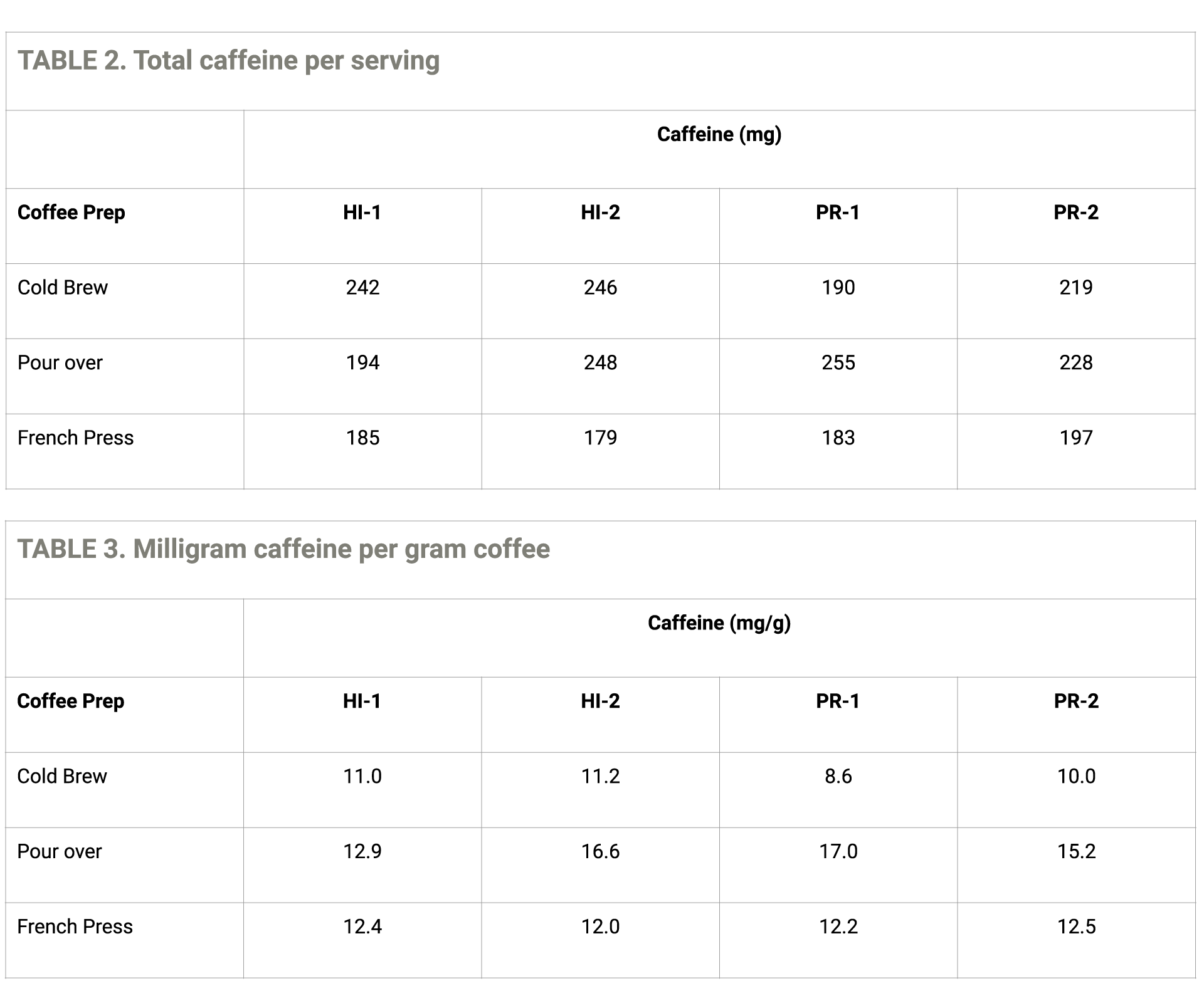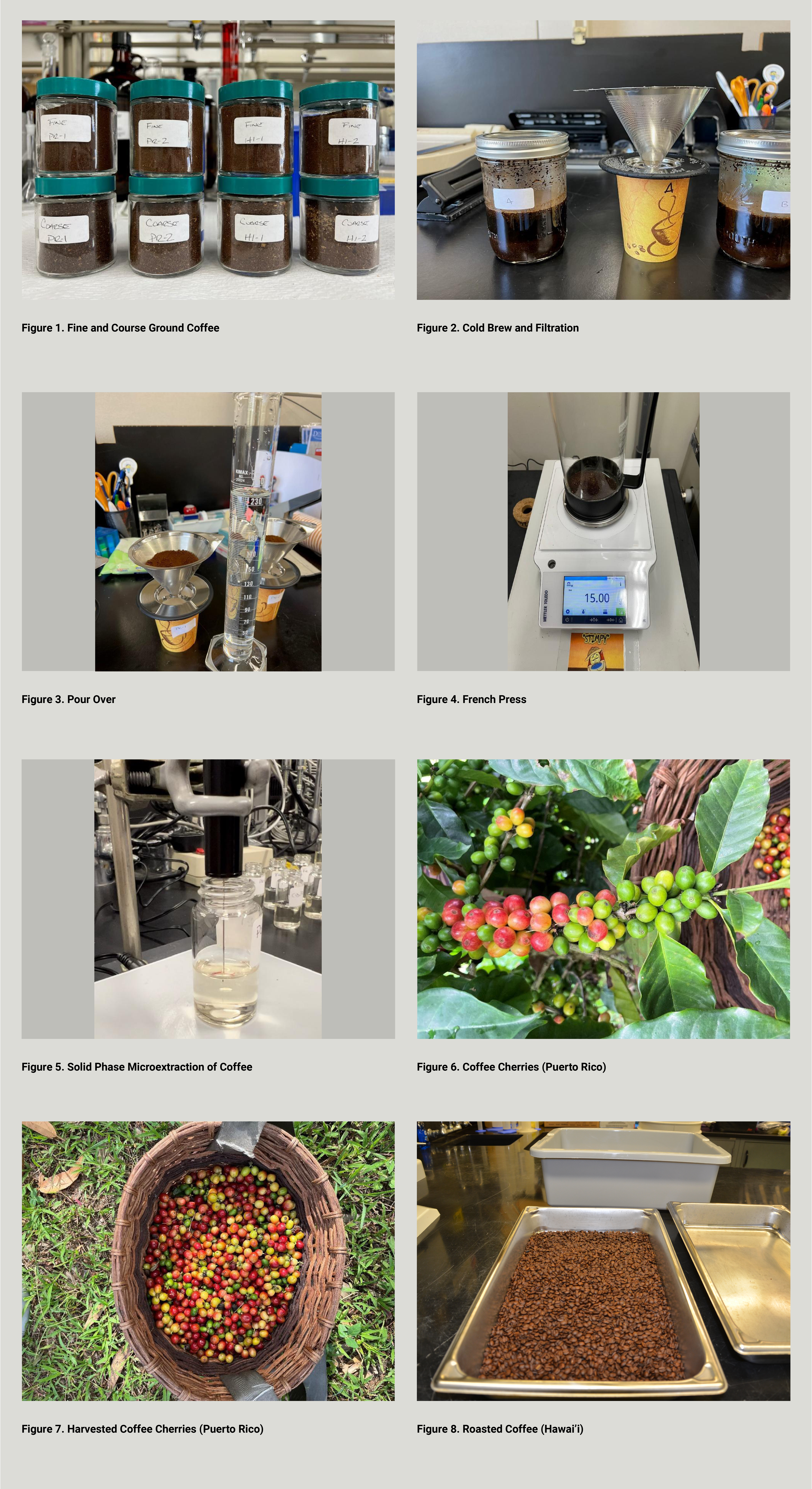
Sometimes being in the middle of a friendly rivalry can fuel a researcher’s curious (and competitive) spirit. Recently, IR-4’s Western Region Director, Matt Hengel, was faced with an irresistible research question: which coffee has more caffeine—Hawai’i’s or Puerto Rico’s? While it’s not official IR-4 business, the lab team couldn’t help but launch a lighthearted investigation into which bean buzzes better.
Hengel leads IR-4’s Western Region Analytical Lab, based at the University of California-Davis (UCD). The lab is positioned in between (give or take a few miles and a lot of water) the two U.S. coffee-producing areas: the central mountainous range of Puerto Rico (PR) and the Kona region of Hawai’i, which lies along the western coast of the island.
It all started with an innocent tweet by Hengel, which shared results produced by students in his “Quantitation of Toxicants in the Environment” course, where they conducted an experiment meant to determine caffeine content in beverages via solid phase microextraction (SPME). The tweet triggered a response from Wilfredo Robles Vasquez (IR-4 Field Research Director, University of Puerto Rico) asking if Matt needed any coffee samples from PR.
Robles was curious how caffeine content would compare across samples from HI and PR, with a hunch that Puerto Rican coffee would be the most buzz-inducing brew. The scientist in him wanted to measure; the competitor in him needed to compete. Local legend has it that coffee from PR is higher in caffeine due to its climate and elevation. Not to let a good pot-stirring opportunity go to waste, Hengel contacted Julie Coughlin (IR-4 Field Research Director, University of Hawai’i) to let her know that Wilfredo was throwing down the caffeine gauntlet by challenging Hawai’i to a collegial caffeine content competition in coffee (something this important needed an alliteration).
Coughlin said, “Game on.” She quickly shipped two 100% Kona coffees from a local producer to fuel the competition. The Puerto Rican team supplied samples from a recent harvest that were roasted at the Adjuntas Agricultural Experiment Station. See Table 1 for sample details. Both Puerto Rican and Hawaiian coffees belong to the species Coffea arabica (aka Arabic coffee) which accounts for 50-60% of worldwide production (1).

Once the samples arrived, Hengel went about designing experiments to test the caffeine content under different brewing conditions and grind types:
- Cold Brew Coffee: Coarse ground coffee (22 g) was steeped in room temperature water (180 mL at 22°C) for 17 hours. Coffee was decanted through a stainless steel mesh filter.
- French Press Coffee: Coarse ground coffee (15 g) was steeped in near boiling water (235 mL at ~100 °C) for 4.5 minutes. Coffee was pressed and poured through the press device.
- Pour Over Coffee: Fine ground coffee (15 g) had near boiling water (235 mL at ~100 °C) poured over the coffee seated in a stainless steel mesh pour over filter. A small aliquot of water was added to the grounds to cause “bloom” and then the remaining water was added slowly to the filter.
After brewing, each coffee was subsampled and diluted prior to caffeine determination by gas chromatography-mass spectrometry via SPME. The chemists were then able to compare and contrast via sensory testing (a lucky day in the lab). Hengel noted a distinct increase in productivity on the days of sensory testing.

Observations:
- As expected, grind size plays a key role in caffeine extraction. The mg caffeine/gram coffee was significantly higher in finely ground bean vs coarse. This really boils down to the increased surface area of the fine grounds exposed to water during brewing.
- Even though cold brew coffee was allowed to steep for an extended period of time, the efficiency of caffeine extraction is lower than hot water extraction. Cold brew and French press use the same coarse grind, so the heat of the water used for extraction plays a big role. We know hot solvent is more efficient than cold solvent in terms of solubility and extraction, so this was not surprising. A question that could be explored: how does the roasting procedure influence the extraction of caffeine via the cold brew process? Based on the cold brew results, HI coffees were considerably higher in caffeine than the PR coffees; however, with the other preparations, the caffeine values were much closer between the two coffee types. Sounds like more coffee (err, testing) is required.
- Based on the results within preparation type, French press produced the most consistent caffeine content among the various coffee types. Conversely, pour over coffee had the highest variability in caffeine content—most likely due to inconsistency in the addition of water to the filter. If water was added too fast, water would bypass the filter cake and not extract the coffee. Or, if the “bloom” wasn’t allowed to form, water could “channel” through the coffee grounds and would not effectively extract caffeine. Certainly, the consistency could be improved with more practice in pour over preparation.
Overall, the coffees performed similarly in terms of caffeine content and it’s difficult to statistically declare a winner given the limited number of analyses and apparent variability in sample preparation (I’m looking at you pour over). Chemists in the lab thoroughly enjoyed tasting these exceptional coffees and discussing the differences in flavor and aroma. We are very grateful and appreciative to have colleagues (friends, really) in PR and HI to share in this buzzworthy specialty crop commodity!
Competition aside, the real winner(s) are the coffee growers who benefit from the hard work and dedication of researchers like Julie Coughlin, Wilfredo Robles Vasquez and the rest of the IR-4 team—as well as consumers who enjoy and depend on this commodity for their daily brew.
Figures:

References:
- Coffee: World Markets and Trade. United States Department of Agriculture, Foreign Agricultural Service. December, 2022.
About The IR-4 Project
The mission of the IR-4 Project is to facilitate regulatory approval of sustainable pest management technologies for specialty crops and specialty uses to promote public well-being. By working directly with local crop growers across the country, IR-4 conducts research and develops data necessary for the registration of pest management tools, ensuring that they are safe for use. To learn more, visit our website.
